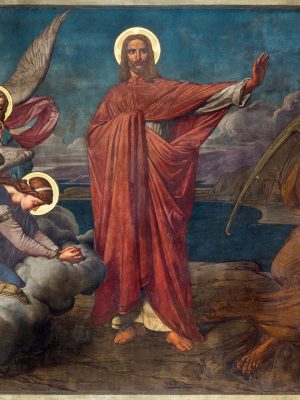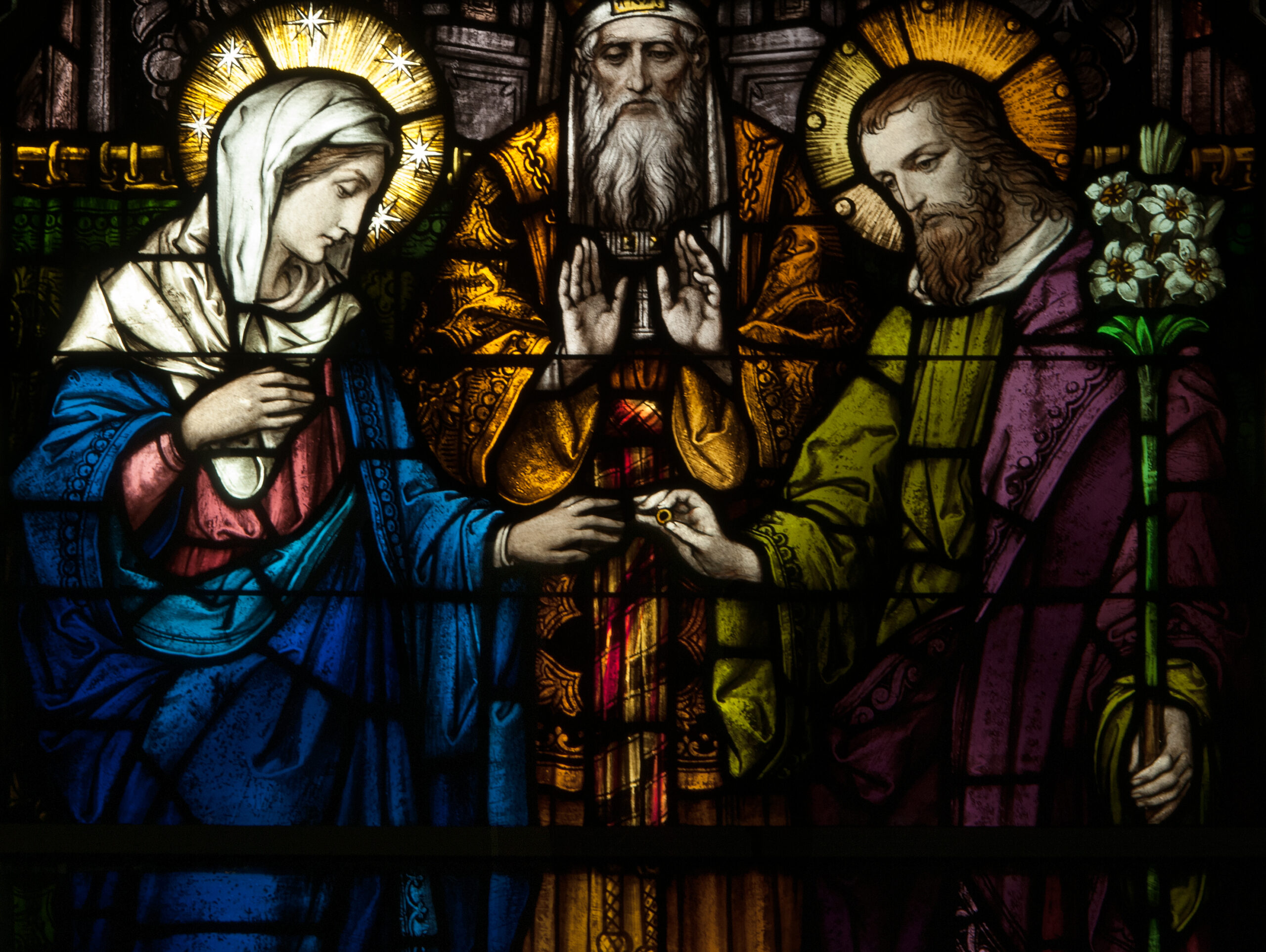I love the old Twilight Zone episodes. One of my favorites is called “The Howling Man.” A bedraggled, desperate, ill tourist somewhere in the remote mountains of Europe happens upon a monastery late at night in the middle of nowhere. The monks and the abbot, Brother Jerome, are reluctant to let him in, but their reluctance gives way to Christian charity, and they let the ailing traveler enter for safety and comfort.
That reluctance, we soon learn, is because of what the monks have chained inside. Yes, chained. Shackled in a cell is a shady character who tries to convince the visitor that the brothers, and especially Brother Jerome, are insane—they have him tied up for no good reason. They are irrational, crazy, superstitious idiots, religious fanatics. The figure repeatedly tempts—and lies to—the confused visitor. The visitor gives in to the deceiver and sets him free.
And when he does, all hell breaks loose, literally.
Once unshackled, the figure chillingly transforms before the visitor’s and the viewers’ very eyes. He transforms into Lucifer himself. Unchained, he slithers his way back into the world, sowing evil and destruction, causing wars, hate, dissension, and more. While he had been chained, there was peace in the world. Now that he was unchained, chaos would prevail.
What’s particularly profound about “The Howling Man” is how properly theological it might well be, with obvious artistic license (hey, it’s Hollywood). I thought of it while currently reading a superb book by Paul Thigpen, Saints Who Saw Hell, published in 2019 by TAN Books.
Thigpen’s book offers dozens of examples of descriptions and visions of hell, from Dante’s Inferno to the Old and New Testament to Jesus Christ Himself to many saints. Among them, two of the visionaries jumped out at me in light of my focus here: St. Hildegard of Bingen and Blessed Anne Catherine Emmerich.
St. Hildegard of Bingen (1098–1179) was a German Benedictine abbess, a mystic, a visionary, a musician, a composer, and a Doctor of the Church. She produced three volumes of visionary theology, the first of which was titled Scivias and completed around 1151. It reports twenty-six of her visions, two of which (on hell and the devil) are excerpted by Thigpen.
Hildegard described the devil as a monstrous, horrible-looking worm. This creature was “amazingly huge and long,” with the mouth and nose of a viper and the hands of a man and a grotesque and deadly tail. It “provoked a feeling of horror and fury beyond words.”
And then Hildegard noted this detail: “A chain was riveted around the neck of the worm, binding its hands and feet as well, and securely fastened to the rock in the abyss. In this way the monster was restrained so that it could not move around as its wicked will wished.”
Thus, in this mystical vision that Hildegard had of the devil, Lucifer is chained. This was the mid-twelfth century. Remember that timeline.
Now fast forward.
Thigpen follows Hildegard with Blessed Anne Catherine Emmerich (1774–1824) and her vision. Likewise a German nun (Augustinian), Emmerich is considered by many to be the greatest mystic in the history of the Church, with a record of visions unsurpassed in extraordinary detail. Her imagery of hell and the devil is chilling. And as Thigpen notes, of special interest to readers today is Emmerich’s prophecy that Satan “will be unchained for a time fifty or sixty years before the year of Christ 2000.”
That would be circa 1940–50. That would be the time of World War II, the start of the Cold War, the atomic age, the upheavals of the sexual revolution, the hundreds of millions of abortions, terrorism, and much more. (This was also, ironically, the era of the Twilight Zone episode “The Howling Man.”)
Emmerich’s vision is published in her The Dolorous Passion of Our Lord Jesus Christ. She stated, “Many were chained down in a circle that was placed around other circles. In the center of hell I saw a dark and horrible-looking abyss. Into this Lucifer was cast, after being first strongly secured with chains.” Emmerich added, “God himself had decreed this arrangement. I was likewise told, if I remember rightly, that he [Satan] will be unchained for a time fifty or sixty years before the year of Christ 2000. The dates of many other events were pointed out to me that I do not now remember. But a certain number of demons are to be let loose much earlier than Lucifer, in order to tempt men, and to serve as instruments of divine vengeance. I should think that some must be loosened even in the present day, and others will be set free in a short time.”
This seems especially apt for that era. It was precisely in this period (before Emmerich’s death in 1824) that Karl Marx and Friedrich Engels were both born in Germany, unleashing a terrible ideology—one that the Catholic Church called “a Satanic scourge . . . orchestrated by the sons of darkness.” That “pernicious, diabolical” ideology would lead to the deaths of more people than any ideology in all of history (see my book The Devil and Karl Marx). The nineteenth century was filled with wicked men with wicked ideas, including the likes of Lenin and Stalin and Trotsky, all born later in the century and ultimately cementing the bloody Bolshevik Revolution in 1917, which eventually led to the Cold War in the late 1940s. (Moreover, it was Stalin and Hitler together who launched WWII with the Hitler-Stalin Pact in August 1939.)
Notably, it was Emmerich’s (and Bingen’s) native Germany that produced so many men of destructive ideas, from Marx and Engels to the Frankfurt School and its perverse Freudian-Marxism to Hitler and more.
Non-Catholics (especially Protestants) might dismiss these visions by Hildegard and Emmerich as being outside the Scriptures, which indeed they are. They might also contend that a loving God would never unleash Lucifer to wreak havoc on His people.
And yet, what Bingen and Emmerich reported does not seem to be outside the bounds of the Scriptures, or at least not a contradiction. Indeed, what I find so intriguing about these two visions is how they seem to reconcile with the book of Revelation.
Revelation 20:1–4 states, “Then I saw an angel come down from heaven, holding in his hand the key to the abyss and a heavy chain. He seized the dragon, the ancient serpent, which is the Devil or Satan, and tied it up for a thousand years and threw it into the abyss, which he locked over it and sealed, so that it could no longer lead the nations astray until the thousand years are completed. After this, it is to be released for a short time.” And then Revelation 20:7, “When the thousand years are completed, Satan will be released from his prison” (The New American Bible, Revised Edition).
That’s remarkably similar to the visions of Hildegard and Anne Catherine Emmerich, right down to the thousand years and the devil being unchained for a short time.
Of course, as the Scriptures say, we cannot know the exact time. Nonetheless, the Scriptures do point to a thousand-year period and then a short time that follows. If the period of the devil being bound had been, say, 940/50 to 1940/50, it would be not inaccurately represented by the claims of Bingen and Emmerich. That would also mean, yet again, that the Middle Ages, or Dark Ages, were not as dark as their secular detractors like to frame them. Sure, they were far from perfect, but the devil hadn’t been loosened upon them as he has upon our age, perhaps.
Yes, perhaps.
What to make of this? I will not dare venture to try to say with any authority. I’m a mere Catholic academic reading this stuff and struck by it. I’m sure you are as well. It leaves us much to consider about what might have been unchained in our time.






